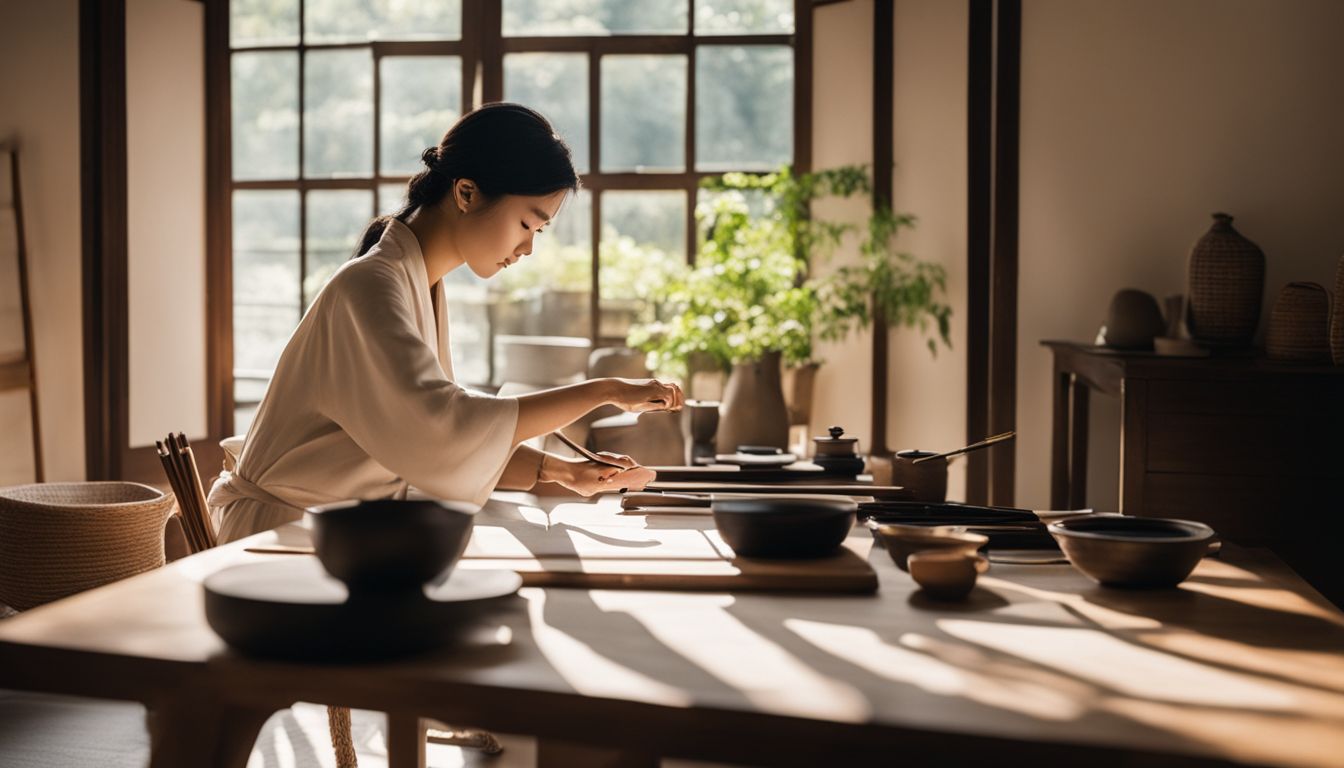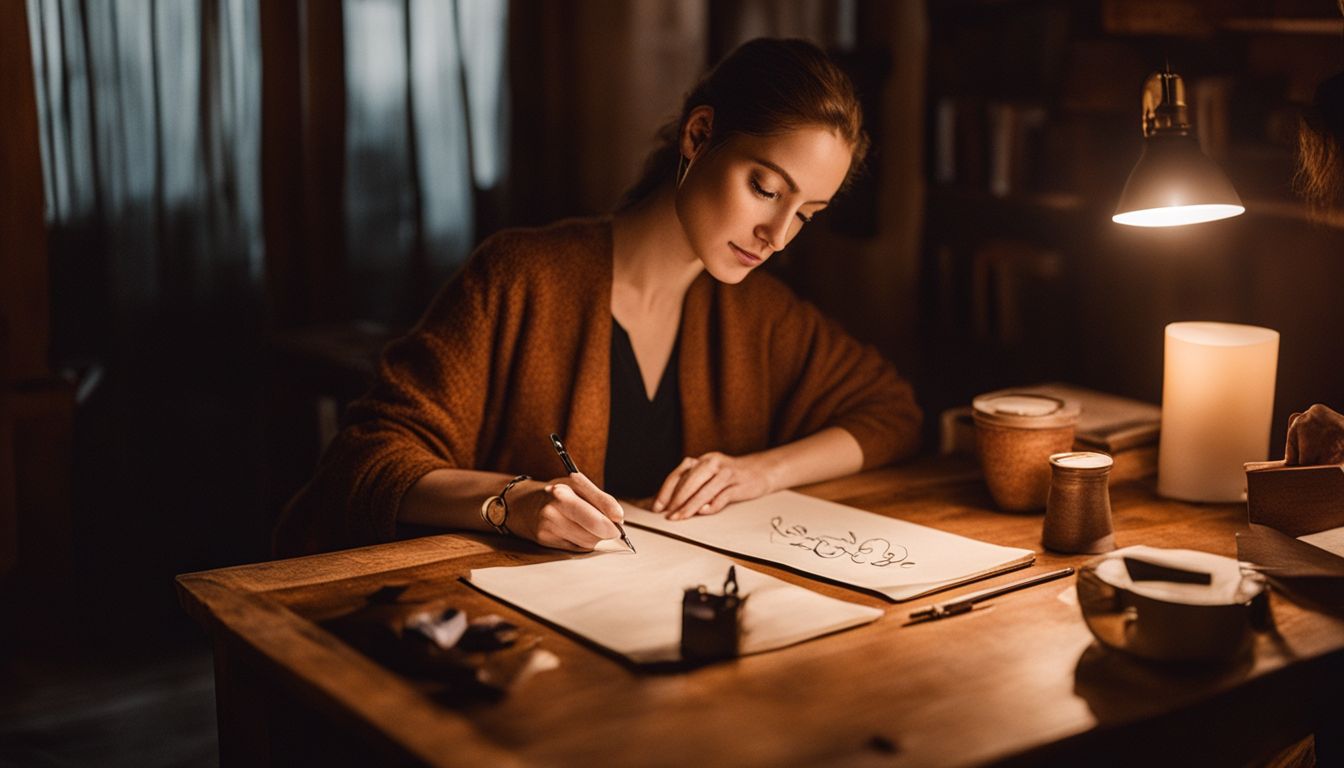Calligraphy is an art form that combines visual appeal with the written word, creating elegant and captivating designs. Whether you’re a beginner or an experienced artist, the tools you use can significantly impact your work. This article explores the essentials of calligraphy, including the types of pens, nibs, inks, and paper that can elevate your craft.
Key Takeaways
- Different types of calligraphy pens, such as dip pens, fountain pens, and brush pens, offer unique features and benefits.
- Choosing the right nib size and material is crucial for achieving the desired calligraphy style.
- High-quality ink, whether black, colored, or metallic, can add flair and elegance to your work.
- The quality of paper is essential; smooth, bleed-proof paper is recommended for clean lines and professional results.
- Calligraphy pens are suitable for a wide range of users, from beginners to experienced artists and designers.
Understanding Different Types of Calligraphy Pens
When it comes to calligraphy, the type of pen you use can significantly impact your writing experience and the final result. Understanding the different types of calligraphy pens will help you choose the right tool for your needs and preferences.
The Importance of Nibs in Calligraphy
Nibs are the heart of any calligraphy pen, and understanding their importance can significantly enhance your writing experience. Mastering the art of writing with a fountain pen involves knowing the right nib size, material, and maintenance techniques.
Choosing the Right Nib Size
The nib size and shape of a calligraphy pen determine the thickness and style of your lettering. Different nib sizes are suitable for various projects, from fine details to bold strokes, so it’s essential to choose the right one for your desired outcome.
Exploring Nib Materials
Nibs come in various materials, each offering unique benefits. For beginners, a hard nib is ideal as it is easier to control. Two brands are most popular for calligraphy newbies and both have a very similar feel, these are Nikko G and Zebra G. Simply choose whichever is easier or cheaper to find locally.
Maintaining Your Nibs
These nibs are sturdy and hardwearing and can produce beautiful lines. Clean them well after use and they will serve you well for a long time. Proper maintenance ensures that your nibs remain in excellent condition, providing a smooth and enjoyable writing experience.
Selecting the Best Ink for Calligraphy
Choosing the right ink is crucial for achieving beautiful calligraphy. High-quality ink makes a big difference in the final appearance of your work. Here, we’ll explore the different types of inks available and their unique benefits.
Why Paper Quality Matters in Calligraphy
Smooth vs. Textured Paper
Not every paper will work with every tool. When it comes to calligraphy, the texture of the paper can significantly impact your writing experience. Smooth paper allows for clean and precise lines, making it ideal for detailed work. On the other hand, textured paper can add a unique character to your calligraphy but may require more skill to navigate.
Bleed-Proof Paper: Essential for Clean Lines
One of the most important features to look for in calligraphy paper is its ability to prevent ink from bleeding. Bleed-proof paper ensures that your lines remain crisp and clear, which is crucial for maintaining the integrity of your work. This type of paper is especially important when using inks that are prone to spreading.
Recommended Brands for Calligraphy Paper
When selecting paper for your calligraphy projects, it’s essential to choose high-quality options. Here are some recommended brands:
- Rhodia: Known for its smooth, high-quality paper, perfect for both practice and final artworks.
- Clairefontaine: Offers a range of options, including bleed-proof paper ideal for calligraphy.
- Fabriano: Provides mixed media paper with a slight texture, adding a unique touch to your projects.
For practice, you’ll need something good quality but inexpensive as you’ll go through a fair few pages. You can opt for pads with smooth paper, such as Rhodia or Clairefontaine Triomphe Pad.
Who Should Consider Using Calligraphy Pens
Calligraphy pens are perfect for individuals who appreciate the art of handwriting and want to add a touch of elegance to their writing. Whether you are a beginner looking to improve your penmanship or an experienced calligrapher, these pens can enhance your writing experience. Consider using calligraphy pens if you:
Real-World Applications of Calligraphy Pens
Calligraphy pens are exquisite tools that allow you to create elegant and visually captivating handwriting and artwork. These pens are specifically designed to produce varying line thicknesses and flourishes, making them perfect for adding a touch of sophistication to invitations, cards, certificates, and more. Whether you’re an experienced calligrapher or a beginner, these pens offer ease of use and precise control, enabling you to achieve stunning results.
Conclusion
In conclusion, while you don’t necessarily need a special pen to start your journey into calligraphy, having the right tools can significantly enhance your experience and results. Basic calligraphy pens, such as dip pens, fountain pens, and brush pens, each offer unique benefits and can help you achieve different styles. Additionally, the choice of nibs, ink, and paper plays a crucial role in the quality of your work. By understanding and selecting the appropriate tools, you can elevate your calligraphy skills and create beautiful, elegant pieces. Whether you’re a beginner or an experienced calligrapher, investing in the right equipment is a step towards mastering the art of calligraphy.
Frequently Asked Questions
Do I need a special pen for calligraphy?
Yes, calligraphy pens are specially designed to produce varying line thicknesses and flourishes, making them ideal for calligraphy work.
What types of calligraphy pens are available?
There are several types of calligraphy pens, including dip pens, fountain pens, and brush pens. Each type offers unique features and benefits.
What type of nib should I start with as a beginner?
For beginners, a medium-sized nib is a good starting point as it provides a balance between control and flexibility.
What kind of ink is best for calligraphy?
High-quality ink is essential for calligraphy. Black ink is a classic choice, but colored and metallic inks can add flair to your work.
Why is paper quality important in calligraphy?
Paper quality matters because not all paper is created equal. Smooth, bleed-proof paper specifically designed for calligraphy will yield the best results.
Can calligraphy pens be used for other artistic projects?
Yes, calligraphy pens are versatile tools that can be used for invitations, cards, certificates, awards, and various artistic projects and decor.




Leave a Reply
You must be logged in to post a comment.